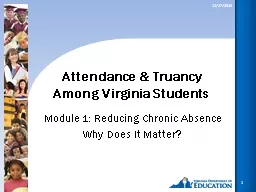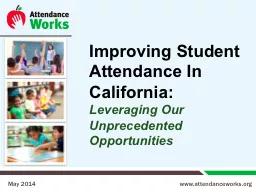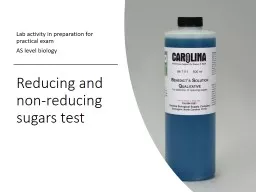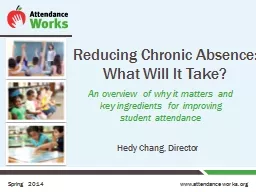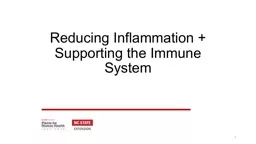PPT-Module 1: Reducing Chronic Absence
Author : mitsue-stanley | Published Date : 2018-11-18
Why Does It Matter 11172015 1 Attendance amp Truancy A mong Virginia Students This PowerPoint serves as No 1 in a series of modules designed to equip Virginia
Presentation Embed Code
Download Presentation
Download Presentation The PPT/PDF document "Module 1: Reducing Chronic Absence" is the property of its rightful owner. Permission is granted to download and print the materials on this website for personal, non-commercial use only, and to display it on your personal computer provided you do not modify the materials and that you retain all copyright notices contained in the materials. By downloading content from our website, you accept the terms of this agreement.
Module 1: Reducing Chronic Absence: Transcript
Download Rules Of Document
"Module 1: Reducing Chronic Absence"The content belongs to its owner. You may download and print it for personal use, without modification, and keep all copyright notices. By downloading, you agree to these terms.
Related Documents

